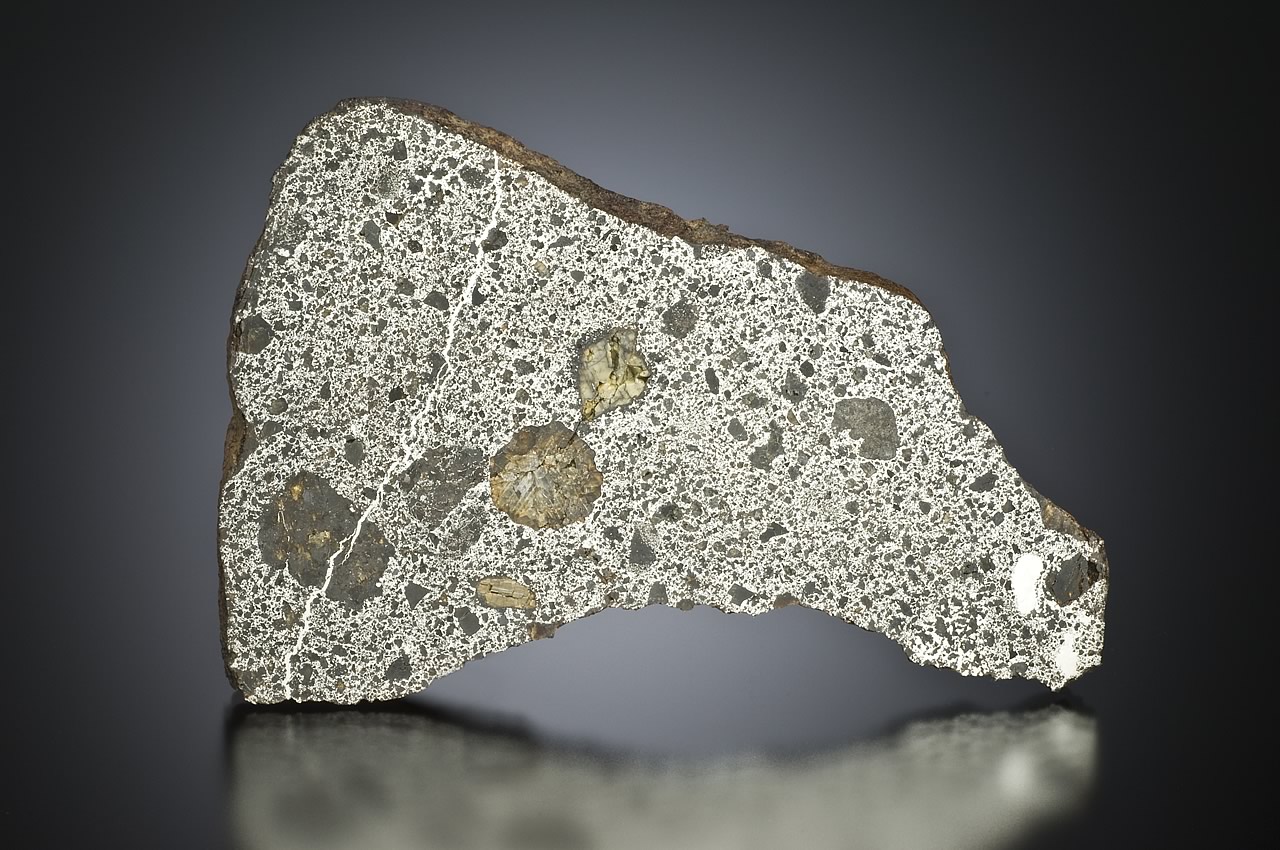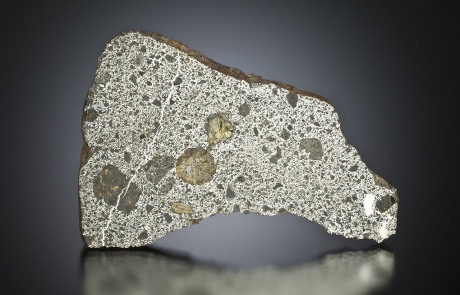Clover Springs
A single mass was found ~20 km SW of Clover Springs. The meteorite is an unexceptional mesosiderite with silicates (mostly orthopyroxene and lesser plagioclase) accounting for most of the volume and mass (Fe-Ni metal <40 wt%). Pyroxene, plagioclase and lesser amounts of olivine are found both as individual clasts and matrix components. Kamacite, taenite, and troilite are the most prominent opaques. Additional minor silicates, chromite, ilmenite, and merrillite are also reported. Clover Springs is classified as an Mesosiderites-A2 (subclass B, moderate plagioclase; petrologic type 2, moderately reequilibrated matrix).
Clover Springs is the most massive of three meteorites classified as Mesosiderite-A2 at the Meteoritical Database (as of early June 2015). The largest Clover Springs pieces are or have been held by the Natural History Museum in London (2.419 kg), the U.S. National Museum in Washington (1.05 kg), the Max-PIanck-Institute in Mainz, Germany (921 g), and at Arizona State University in Tempe (415 g).
1 Photo
Details
| Location: | Gila County, Arizona 34°27’N, 111°22’W |
| Classification: | Mesosiderite-A2 |
| Witnessed: | No |
| Found: | 1954 |
| TKW: | 7.7 kg |
|
|
|
| Links: | Meteoritical Society |



